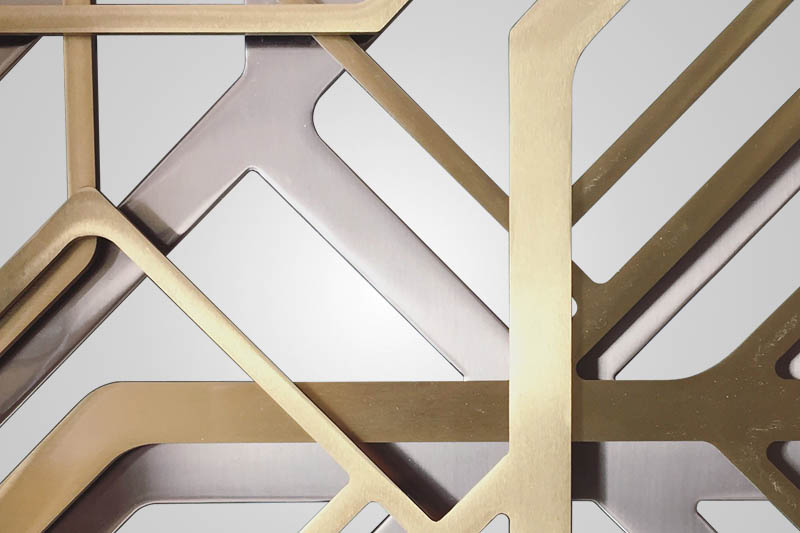In the realm of modern design, architectural metal fabrication for residential projects has emerged as a game-changer. As homeowners increasingly seek unique and durable design elements, the importance of incorporating metals like steel, aluminum, and copper into residential architecture cannot be overstated. This article delves into the world of architectural metal fabrication, exploring its significance, applications, and the benefits it offers to residential projects.

The Rise of Metal in Residential Architecture
Over the past few decades, there has been a noticeable shift towards using metal in home design. This trend is driven by a combination of aesthetic appeal, durability, and sustainability. Metals provide a sleek, modern look that is both functional and visually appealing. Moreover, they are incredibly durable, making them an excellent choice for long-lasting structures.
Furthermore, metals are highly recyclable, aligning with the growing demand for sustainable building materials. As a result, they have become a preferred choice for environmentally conscious homeowners and builders.
Understanding Architectural Metal Fabrication
Architectural metal fabrication involves the creation of metal structures or components for use in building design. This process encompasses cutting, bending, and assembling metal pieces to form various architectural elements. From staircases and railings to decorative panels and facades, the possibilities are endless.
In residential settings, metal fabrication can be utilized to create custom features that enhance both the functionality and aesthetics of a home. Whether its a striking metal staircase that serves as the centerpiece of a living space or intricate metalwork that adds character to an exterior faade, the versatility of metal is unmatched.
Key Benefits of Metal Fabrication in Residential Projects
There are several advantages to incorporating metal fabrication into residential projects:
- Durability: Metals are incredibly strong and resistant to wear and tear, ensuring longevity.
- Design Flexibility: Metal can be molded into various shapes and designs, offering endless possibilities for customization.
- Low Maintenance: Unlike wood or other materials, metals require minimal upkeep, making them a practical choice.
- Eco-Friendly: Metals are recyclable, reducing environmental impact.
Applications of Metal Fabrication in Homes
The applications of metal fabrication in residential projects are vast and varied. Here are some popular uses:
1. Staircases and Railings
Metal staircases and railings are not only functional but also serve as a striking design element. They can be crafted in various styles, from sleek and modern to ornate and traditional.
2. Exterior Facades
Metal cladding and facades add a contemporary touch to any home, enhancing curb appeal while providing protection against the elements.
3. Decorative Panels and Screens
Custom metal panels and screens can be used to create unique architectural features, adding texture and depth to interior and exterior spaces.
4. Outdoor Structures
From pergolas and gazebos to trellises and fences, metal fabrication offers durable solutions for outdoor structures that withstand the test of time.
Choosing the Right Metal Fabricator
Selecting the right metal fabricator is crucial to the success of any residential project. Its essential to work with professionals who have the expertise and experience to bring your vision to life. When choosing a fabricator, consider their portfolio, reputation, and ability to collaborate closely with architects and builders.
For more detailed guidance on selecting a fabricator, you can visit this guide.
The Future of Metal Fabrication in Residential Design
As technology advances, the potential for metal fabrication in residential design continues to grow. Innovations in CNC architectural metal fabrication, for instance, are revolutionizing the industry by allowing for greater precision and efficiency. With these advancements, the possibilities for creating intricate and customized metal designs are expanding.
Learn more about CNC fabrication by visiting this resource.
Embracing Sustainability
In addition to technological advancements, there is a growing emphasis on sustainability in metal fabrication. Many fabricators are now utilizing eco-friendly practices and materials, further enhancing the appeal of metal in residential projects. This commitment to sustainability aligns with the broader goals of reducing environmental impact and promoting responsible building practices.
For more information on sustainable metal fabrication, explore this article.
Conclusion
In conclusion, architectural metal fabrication for residential projects offers a wealth of opportunities for homeowners and designers alike. With its combination of durability, design flexibility, and sustainability, metal is poised to shape the future of residential architecture. By embracing this versatile material, you can create spaces that are not only beautiful but also built to last.

Frequently Asked Questions
What types of metals are commonly used in residential projects?
Commonly used metals in residential projects include steel, aluminum, copper, and brass. Each metal offers unique properties that make it suitable for different applications.
Is metal fabrication suitable for all architectural styles?
Yes, metal fabrication can be adapted to suit a wide range of architectural styles, from modern and contemporary to traditional and rustic.
How can I ensure a successful metal fabrication project?
To ensure a successful metal fabrication project, work with experienced professionals who understand your vision and can provide the necessary expertise and craftsmanship.
This article contains affiliate links. We may earn a commission at no extra cost to you.

